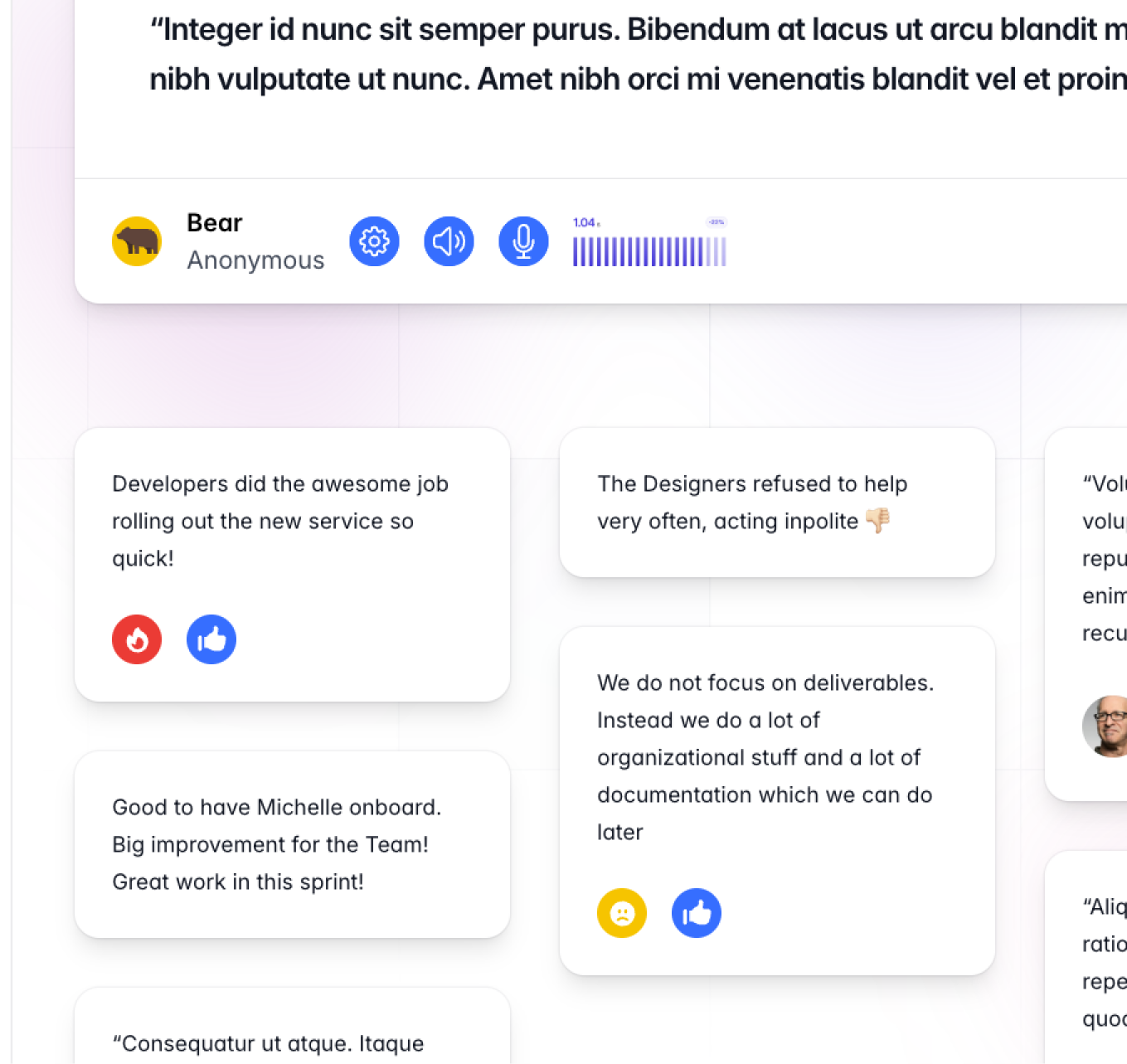Wednesday, December 11, 2024
How to Get the Most Out of Your Retrospective Sessions

Retrospective sessions are a cornerstone of effective agile and Scrum practices. They provide a structured opportunity for teams to reflect on recent work, identify areas for improvement, and celebrate successes. However, traditional retrospectives can sometimes suffer from a lack of honesty and open communication, as participants may feel self-conscious or hesitant to share genuine feedback—especially if the feedback is critical or sensitive.
Why Anonymity Matters
One of the biggest barriers to productive retrospectives is the fear of judgment. When participants worry about how their input will be perceived by peers or leadership, they often hold back, leading to less meaningful conversations and stagnant team growth. By introducing anonymity, you remove the pressure to “look good” or avoid blame. As a result, the feedback becomes more genuine and insightful.
Research in organizational psychology shows that people are more likely to share truthful perspectives when their identities are protected. Anonymous environments encourage psychological safety, helping teams uncover issues that would otherwise remain hidden. This honest dialogue is the bedrock for continuous improvement and can transform a team’s dynamic over time.
Best Practices for Agile Retrospectives
In Scrum and other agile frameworks, retrospectives occur at the end of each iteration or sprint. They are intended to help teams inspect their processes, adapt their approach, and enhance their effectiveness. Some key best practices include:
- Set a clear purpose: Before starting, ensure everyone understands the goal of the session: to reflect, learn, and adapt.
- Focus on the process, not people: Encourage comments about workflows, tools, and communication patterns rather than personal attributes.
- Keep it time-boxed: Agile ceremonies should be efficient. Limit the session to a reasonable timeframe to maintain engagement and energy.
- End with actionable takeaways: Identify a few concrete steps the team can implement immediately after the retrospective.
Introducing Our Anonymous Retrospective MVP
To help you take your retrospectives to the next level, we are building an MVP for an Anonymity driven Retrospective application. Our platform empowers teams to:
- Create Secure Sessions: Quickly spin up a retrospective session with a three-column board (e.g., Start, Stop, Continue) and share a unique link with participants.
- Collaborate Anonymously: Every participant can add their input without revealing their identity, ensuring honest feedback and increased psychological safety.
- Voice Communication with Real-Time Transformation: Our innovative voice chat feature employs voice-changing technology. Participants can discuss items verbally while maintaining anonymity, encouraging uninhibited conversations.
This MVP is a response to the modern team’s need for a more authentic and effective retrospective experience. By removing the barriers of identity, teams can reach the heart of issues faster, generate more creative solutions, and foster an environment where continuous improvement is truly continuous.
Looking Ahead
As remote and distributed teams become more common, the need for trustworthy, dynamic collaboration tools grows. Our Anonymous Retro platform aims to redefine how your team approaches reflection and improvement. With our focus on psychological safety, agile best practices, and cutting-edge voice transformation, you can expect retrospectives that truly bring the best ideas forward—no matter where your team members are located.
Ready to experience retrospectives that genuinely drive progress? Stay tuned for updates on our MVP launch and sign up for early access. Let’s uncover the truth behind your team’s performance and turn insights into action.